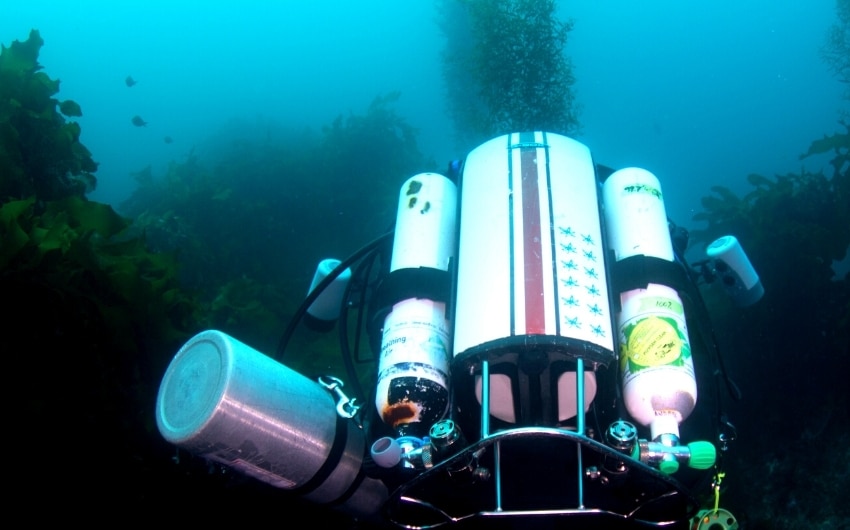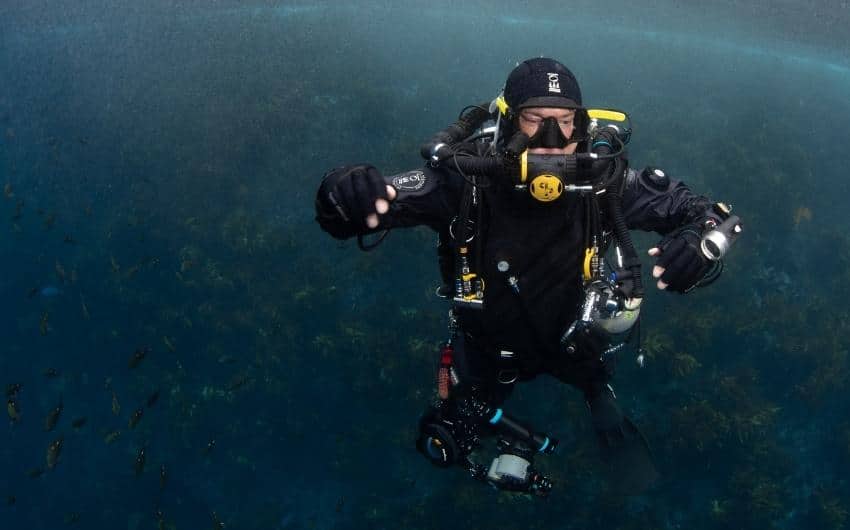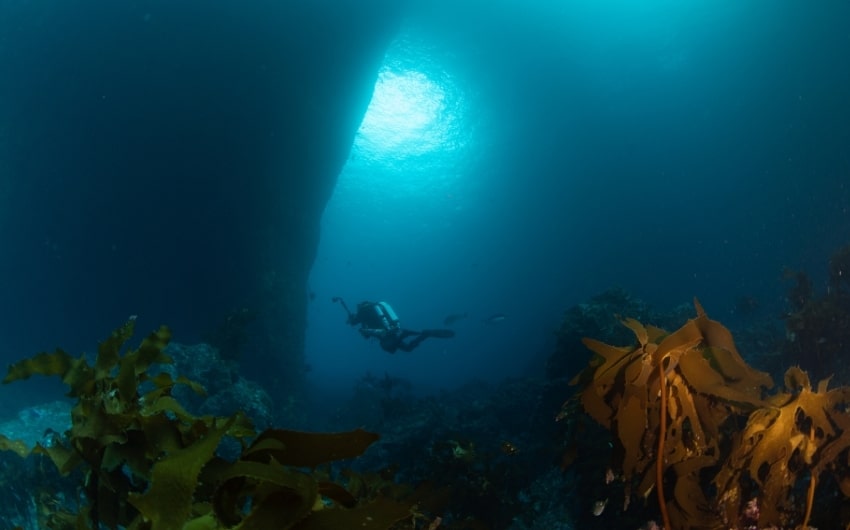
Enjoy the journey to silence.
If you’ve always wanted to use a Rebreather, then you probably already know much about the path ahead.
If you have been out diving and you have seen other divers on this really cool, techie looking piece of kit and want to know a little bit more and what you need to do to follow this path, then carry on reading.

Rebreathers are designed to allow a trained rebreather diver to potentially go deeper and stay longer than divers on Open Circuit and then have better decompression obligations on the way back up. They are very quiet and you quickly begin to enjoy breathing the warmer moist air that is being circulated and you will not miss those loud annoying bubbles that vent through your regulators, going through your photos as they travel up to the surface.
If you have followed the technical diving path through to Technical Extended Range and are thinking about or are already completing Tri-Mix dives, this is where the rebreather will really come in to play. Helium is pretty expensive and having a set of twins filled with nearly $400 of gas is eye watering, especially if you plan to dive deep regularly, the gas bill can soon get out of control. But you can do that calculation

The route to becoming a rebreather diver isn’t short and it isn’t quick. And this is fine, the journey is to be enjoyed and not rushed. The experience that a diver gains in open circuit diving in various environments will play its part in your rebreather diving. So we recommend that you enjoy years of twin tank decompression diving before you follow the rebreather path. But when you are ready, you then need to decide what unit to buy?
The educational path and don’t forget to fun dive in between courses;
Advanced Adventurer
DrySuit Diver and buy a drysuit that has great movement
React Right / First Aid Course with Oxygen
XR Foundation using Twin Tanks
XR Technical Extended Range to 50m using Air
XR Technical Extended Range to 65m with Tri-Mix
Rebreather – 40m Unit Specific
Rebreather – 60m
Rebreather – 100m
So like with all dive training, you are taught how to dive, and you become up skilled in that discipline. But more importantly, you are trained how to deal with the issues likely to be encountered using the equipment being used in your local dive environment and activity. And this is exactly the same throughout the technical diving paths and is so with rebreathers. With rebreathers, if you have a major issue on the rebreather, you bail out onto Open Circuit and begin your journey to the surface. So it is very important that you are comfortable with your buoyancy as an Open Circuit decompression diver and are sufficient in handling decompression bottles and gas planning. If you can truly say that you are, then I would say you are ready to take the steps into the world of the rebreather..
What to expect once you book your course
We will send you an information pack with everything you need to know for the course. We will also send you out information regarding your eLearning login and registration.
It is important that you complete the medical form and get clearance from your doctor if you answered “YES” to any of the forms before coming along to the course.
Leave yourself enough time to complete the eLearning prior to the course start date (around 2 hours).
And of course, if you have any questions then we are only a phone call or email away and always happy to help. Contact us on 09 438 1075 or 0800 DIVE NZ or [email protected].
We limit our courses to small groups and so if a student does not turn up for a course will have have to rebook and pay a rebooking fee of $50